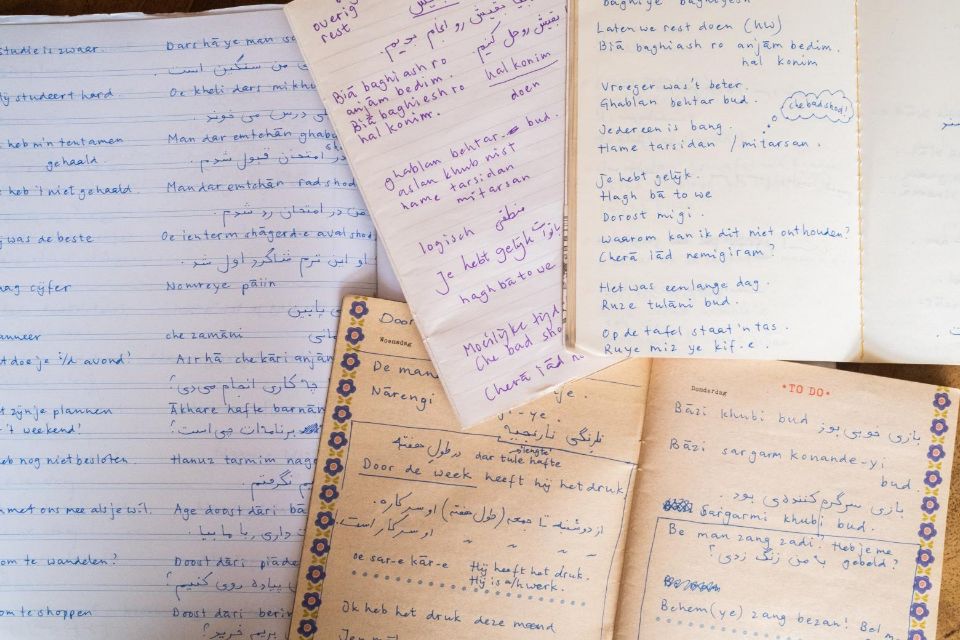Language is tangible
During her second year of Chinese Studies, it seemed that Ans’ proficiency in Chinese was very helpful in Leiden. Many Chinese ama’s ‘(alleenstaande minderjarige asielzoekers, unmarried underaged asylum seekers) and other, often young, people who fled China after the 1989 student demonstrations, depended on Ans’ help. She tried to teach everybody a little Dutch, but quite soon she noticed that structured language lessons were no good. Instead she translated short sentences like “Your lawyer will be here at 11”, “Could you make up your bed?” or “Can I help you?”.
Years later Ans turned the tables. Saeed, Haide and Fardin, who are all from Iran, speak Farsi; why shouldn’t she as well? She met the three of them in the Hooglandse Kerk. The year was 2016, and many Iranian people had fled from their country because of personal or political reasons. Some of them found a place in the emergency shelter behind Leiden Central station. Partly because of this shelter, Leiden was known as the Vluchtenlingenstad (City of refugees).
As a way of escaping the fairly boring days in the emergency shelter , the Iranians went to church every Sunday. One of the churchgoers, who had also come to the Netherlands from Iran, quickly scribbled along the highlights of the sermon on a little piece of paper. The note was then passed on between them along the wooden church bench, so everyone could understand what was being said.
The communication between the group of Iranians and Ans was mostly done through hand gestures. For Christmas, the group is invited by Ans and her family. As a cherry on top, they got to cook whatever they liked best. After the delicious Christmas dinner, the atlas was dusted off, and everyone could point out their hometown. With Google Translate on hand, stories of family, of the journey to the Netherlands, of misery and being homesick were told. Five years later, Saeed, Haide and Fardin still regularly stop by.
When one of them struggles with a Dutch sentence, Ans always writes them down in a small notebook. The word order in Dutch is infamously difficult to understand. “Then it started to itch, because I want to know why that sentence is so difficult for them to understand. Does it differ so much from Farsi?” That is how the language notebooks came into being: Farsi and Dutch, ‘now we learn each other's languages together’.
